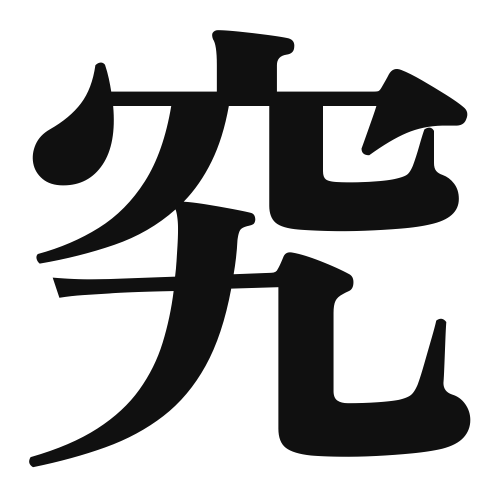1. Overview of Meaning
The kanji “究” (kyū) means “to investigate,” “to study,” or “to research.” It conveys a sense of thoroughness and depth in understanding a subject.
2. Formation and Radical
Formation of the Kanji: The kanji “究” is a compound character (会意文字) that combines elements to convey its meaning. It consists of the radical “穴” (ana), meaning “hole,” which suggests digging deeper, and “九” (kyū), which can imply a sense of completeness or thoroughness.
Radical: The radical of “究” is “穴,” which relates to concepts of depth and exploration.
3. Examples of Usage
Common Words and Phrases: Some frequently used words that include “究” are:
- 研究 (kenkyū) – research
- 究明 (kyūmei) – investigation
- 究極 (kyūkyoku) – ultimate
Example Sentences in Daily Conversation:
- この問題をもっと究明する必要があります。 (We need to investigate this issue further.)
- 彼は科学の研究に究極の情熱を持っています。 (He has an ultimate passion for scientific research.)
4. Synonyms and Antonyms
Similar Kanji: A similar kanji is “探” (tan), which means “to search” or “to explore.” While both involve investigation, “探” emphasizes the act of searching, whereas “究” focuses on thorough understanding.
Antonyms: An antonym of “究” could be “放” (hō), which means “to release” or “to let go,” indicating a lack of investigation or depth.
5. Cultural and Historical Background
Relation to Japanese Culture: The concept of “究” is significant in Japanese culture, especially in academic and research contexts. It reflects the value placed on deep understanding and mastery of subjects.
Proverbs and Idioms: One relevant proverb is “石の上にも三年” (Ishi no ue ni mo sannen), which means “Perseverance prevails,” emphasizing the importance of thorough study and persistence in achieving mastery.
